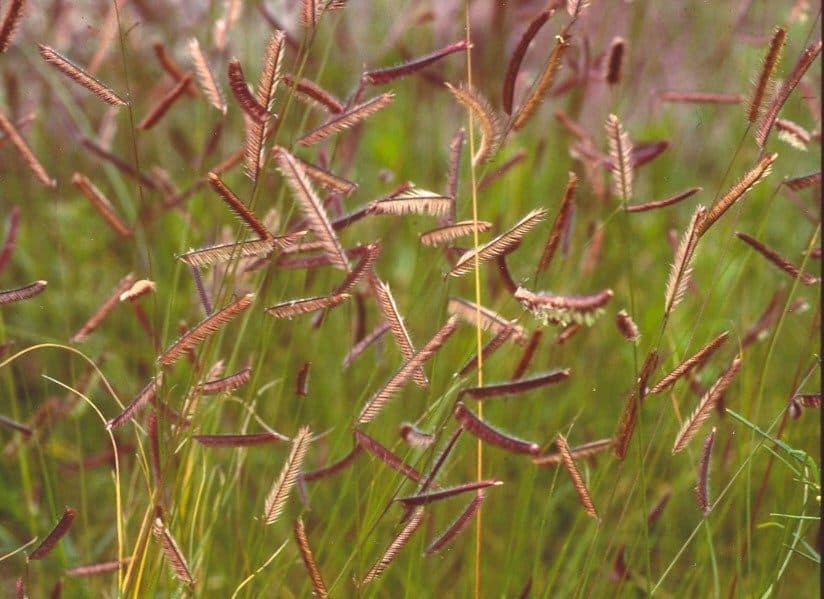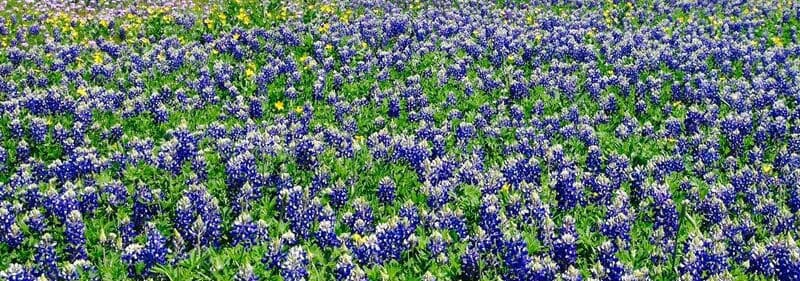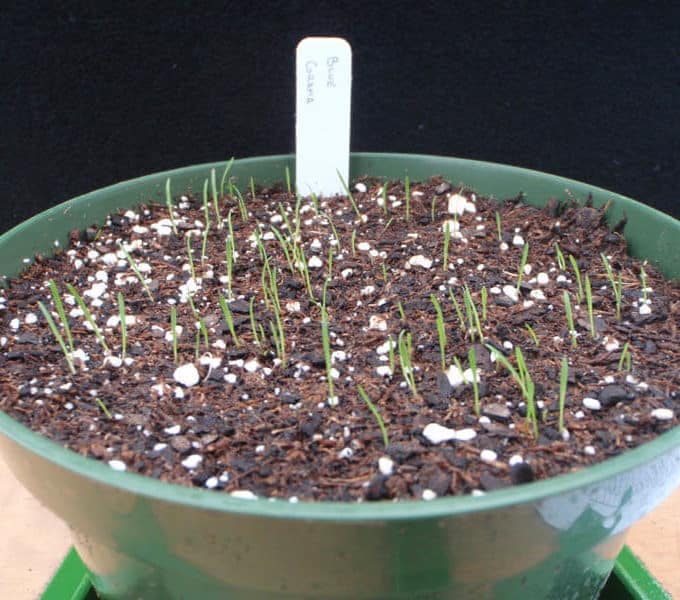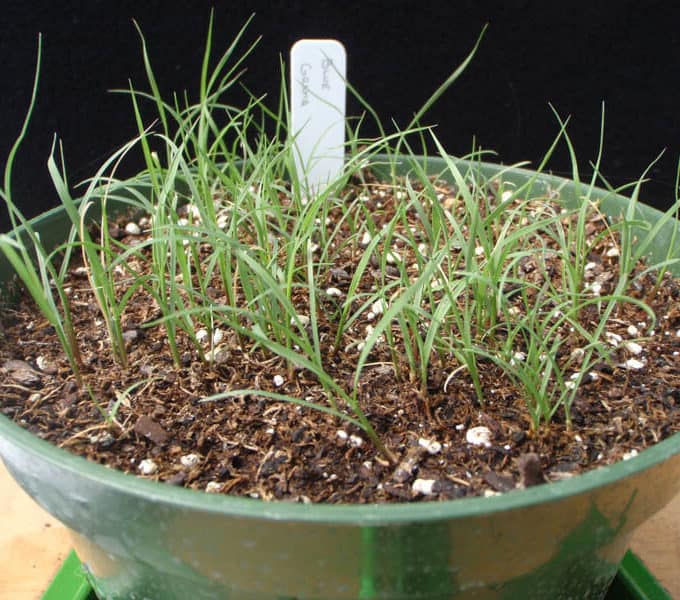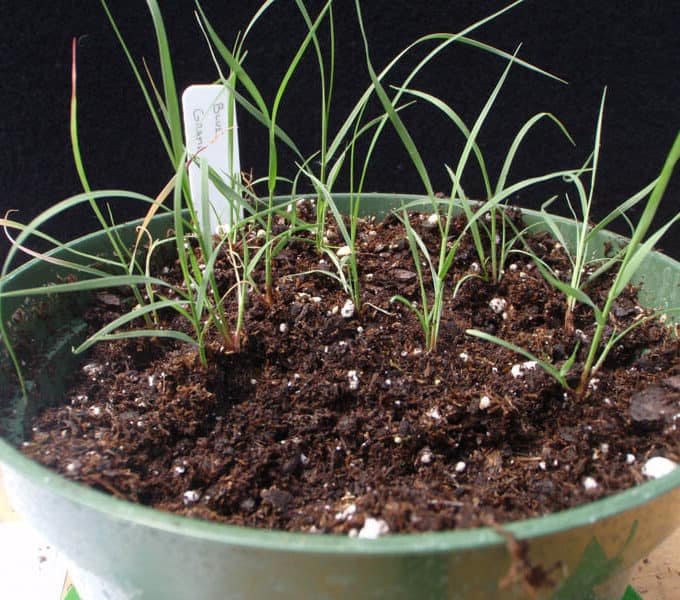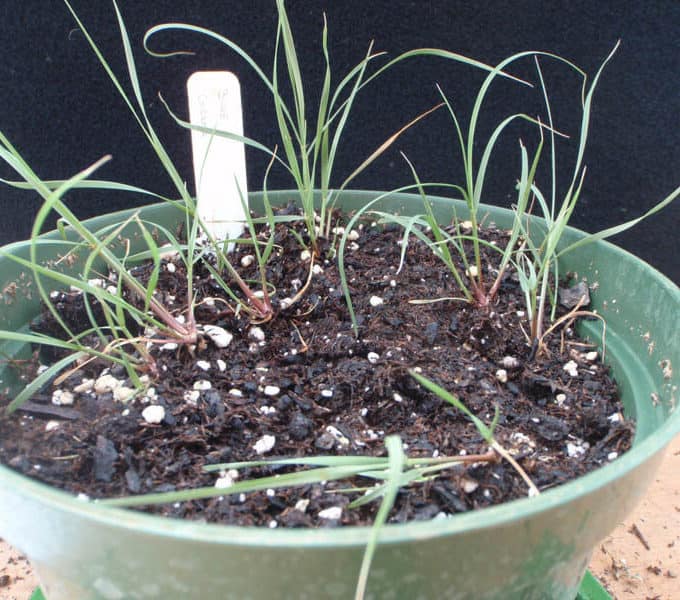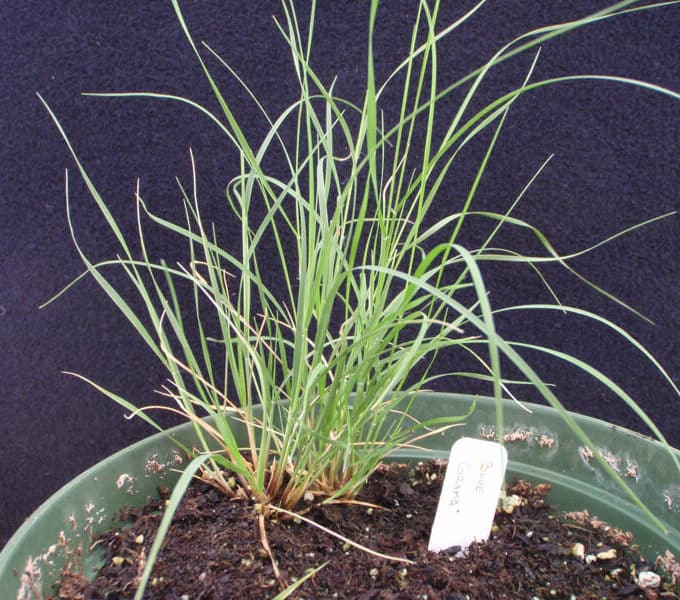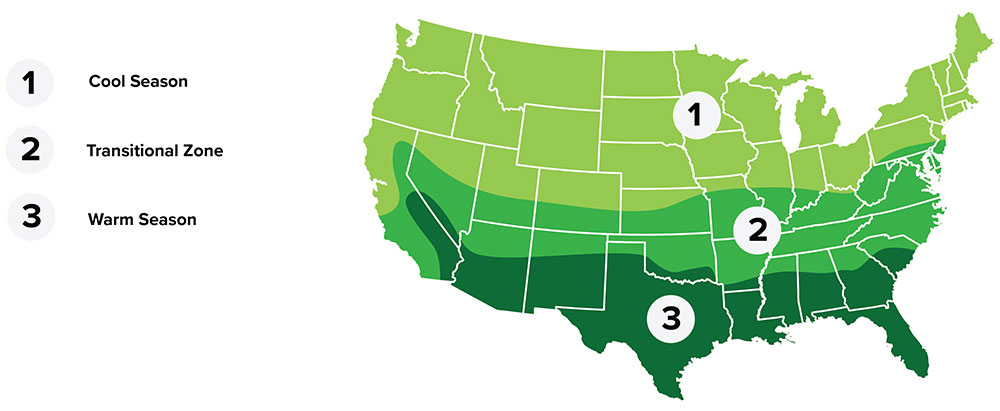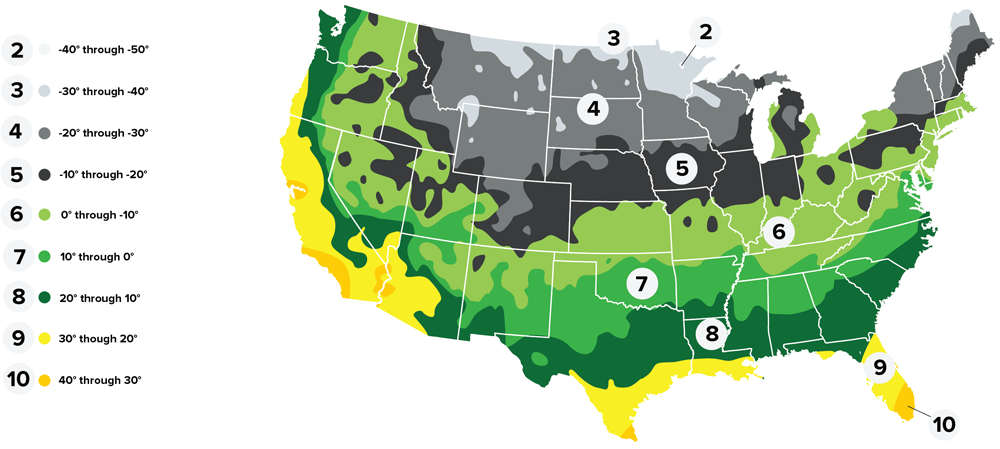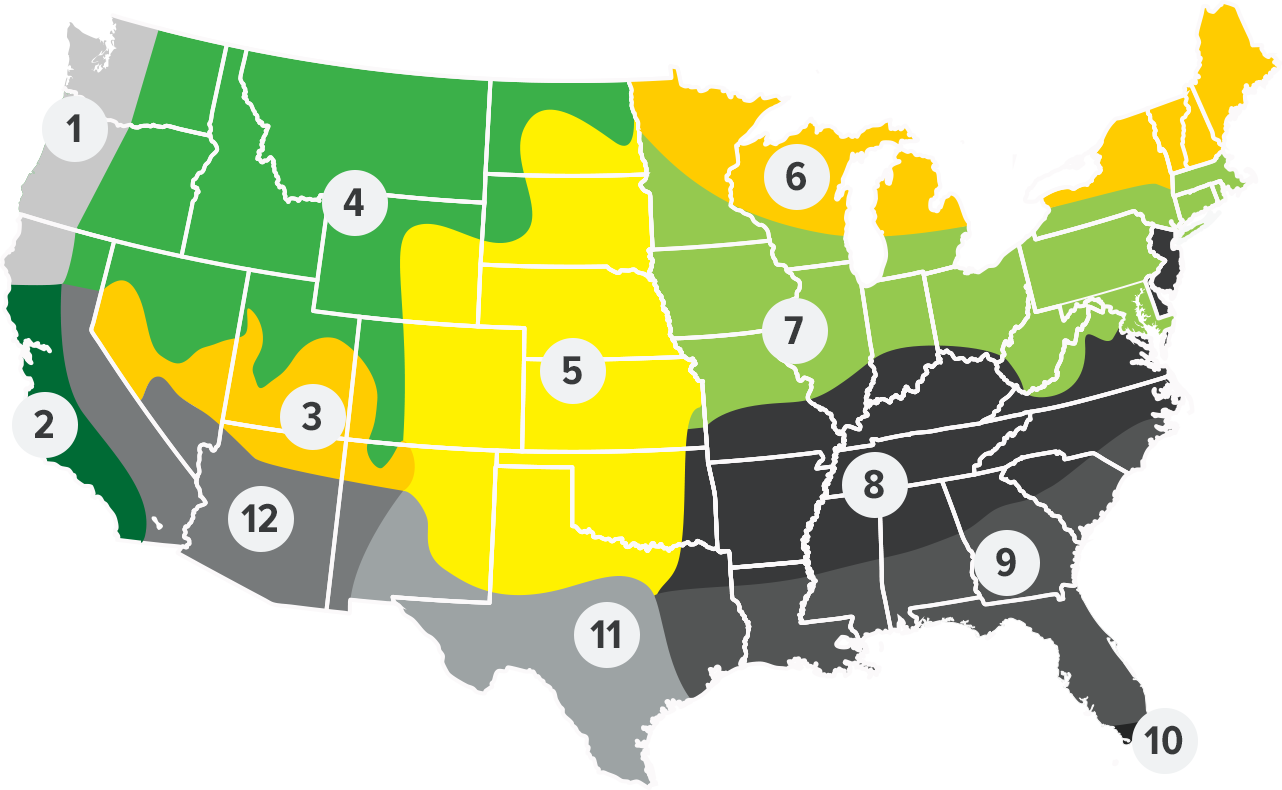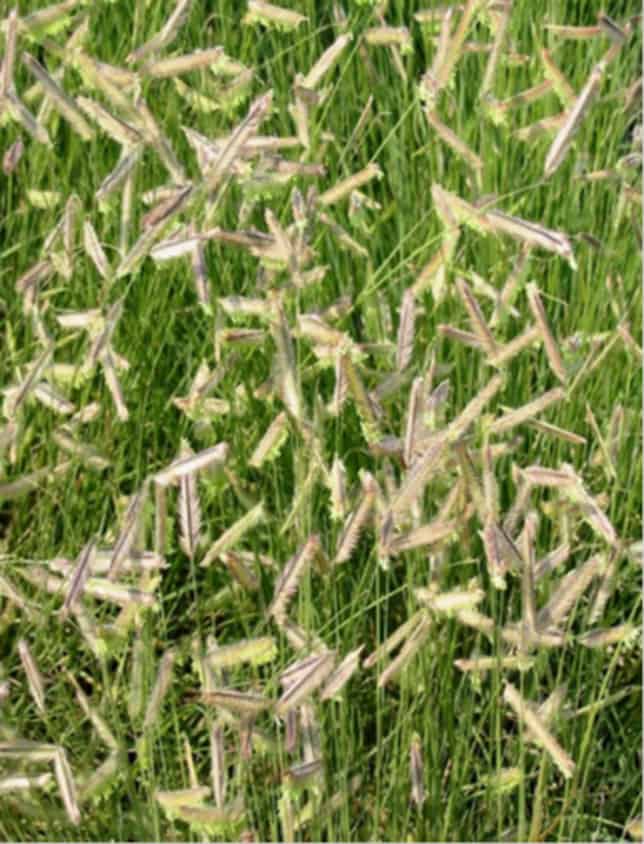
HACHITA BLUE GRAMA
Summary
Blue Grama is a native, perennial, warm-season, short grass that seldom grows taller than 12 to 20 inches. Blue Grama reproduces only by seed, and as the seed heads mature, they usually bend into a curve that resembles a human eyebrow. It produces a low basal type growth that forms a bunchy sod. Blue Grama is grown throughout the Great Plains, and is found in association with buffalograss in the short grass prairies. It is more drought resistant and tolerates alkali conditions better than sideoats Grama. Blue Grama produces highly palatable, nutritious forage that retains its feed value into the winter. Blue Grama does not produce an abundance of forage, and should not be grazed loser than 2 to 3 inches during the growing season.
Plant Characteristics
Taxonomy
Zone
- Regional Growing Zone
- 2 - California Coastal, 3 - Southern Mountain, 4 - Mountain, 5 - Midwest, 6 - Northeast Lakes, 7 - Great Lakes South, 10 - South Florida, 11 - South Texas, 12 - Southwest
- USDA Plant Hardiness Zones
- 2, 3, 4, 5, 6, 7, 8, 9, 10
- Temperature Zone
- Warm, Cool, Transitional
Plant Characteristics
- Height
- 12" - 20"
- Bloom Period
- Summer
- Bloom Color
- Yellow
- Leaf Color
- Green-gray
- Growing Cycle
- Perennial
- Growth Habit
- Bunch-Type
- Sun Requirement
- Full Sun
Plant Information
- Planting Season
- Fall - Early-Spring
- Plant Depth
- 0.25" - 0.5"
- Minimum Soil Temp for Germination
- 50° F
- Establishment
- Moderate
Seed Information
- Seeds Per Pound
- 750,000
- Kingdom
- PLANTAE
- Subkingdom
- TRACHEOBIONTA
- Super Division
- SPERMATOPHYTA
- Division
- MAGNOLIOPHYTA
- Class
- LILIOPSIDA
- Subclass
- COMMELINIDAE
- Order
- CYPERALES
- Family
- POACEAE
- Genus
- BOUTELOUA
- Species
- BOUTELOUA GRACILIS
Coverage Area & Available Sizes
Applications
Blue grama is an excellent choice for erosion control when used as a component in warm season grasses mixes in the short- grass regions of the country. Blue grama has been used as a low-maintenance turfgrass as well as surface revegetation following mining operations.
In southern areas of the U.S. blue grama is primarily a bunchgrass. Under heavy grazing and in more northern states is can form a sod.









